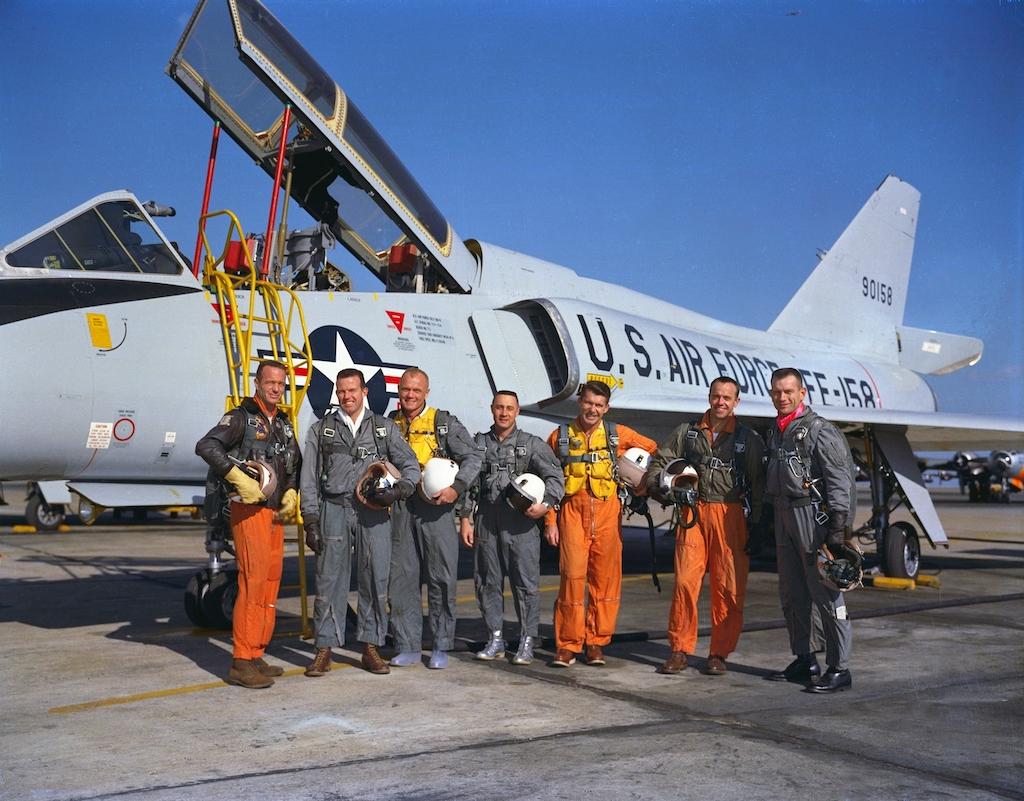
In the first part of this article, we discussed how the pressure to live one's dreams can drive pilots to careless and reckless behavior.
Pressure Point Two: Perfect Versus Good
“Who’s the best pilot you ever saw?” If you’ve seen the movie “The Right Stuff,” you know the answer: “You’re looking at him.” When the movie came out in 1983, pilots of all backgrounds envied the lives of the first seven U.S. astronauts slated to fly the unproven Mercury capsule into space. I was equally enthralled by the movie, but I had two distinct advantages in the ego department. First, I had already read the Tom Wolfe book and expected the bravado. Second, I had graduated from Air Force pilot training four years earlier. (If that experience doesn’t humble you, nothing will.)
Part of the pilot persona is an overwhelming inner self confidence that promotes successes and overlooks any efforts that fall short. On the one hand: “That landing was so smooth, I had to call the tower to confirm we had landed!” But on the other: “There must have been some unreported windshear today!”
A few years ago, I was asked by a pilot new to heavy iron for help with crosswind landings. He was the junior pilot in a 15-pilot flight department that had transitioned from the Citation V to the Gulfstream G650. The story told by senior pilots was the larger aircraft was a dream to fly and posed no stick and rudder challenges. He tended to agree until his first crosswind landing in the big bird. He struggled with it and assumed he was the only G650 pilot in history who had this difficulty. His fellow pilots were of little help. “You’ll get it someday.” He began to dread flying on windy days. After a year of this, he realized that every pilot in his flight department was facing the same struggle and were wondering if their new jet was a lemon. That’s when he called me.
The Citation V has a wingspan of 52 ft., and he landed it like every other airplane in his logbook at the time: he would set up a “wing low” sideslip prior to every landing and hold that until touchdown. I have no doubt this worked for him in the smaller Citation. In the G650, with nearly twice the span, the preferred method is to approach the flare in a crab before aligning the aircraft with the runway, something called a de-crab but many pilots call it “kicking out the crab.” While you can land the airplane wing low, with larger crosswinds the airplane can be a handful and the risk of having a wingtip hit the runway increases. Using the approved de-crab method, the aircraft is easy to land in a crosswind.
I counseled him to try this technique in the simulator until it felt natural and then on the airplane. And that solved his problem. The pilots in his flight department were amazed and all joined in with the new technique. The entire flight department fell in love again with the new aircraft.
I’ve seen this with experienced pilots before and may have been guilty of it too. You think you know all there is to know about flying and your ego prevents you from questioning old techniques or heeding the advice of pilots who may have less experience than you, but more relevant experience for the new aircraft. One’s ego can get in the way of learning.
Pressure Point Three: Politics And Other Taboos

I was flying late at night on Nov. 7, 2000, minding the radios and listening to the other pilot and flight attendant get rather animated about the Presidential election. The mood had turned frosty, and I could tell the pilot was agitated. He kept looking to me for support, but I kept my thoughts to myself. Someone on the radio announced that Vice President Al Gore had conceded—this was before he “unconceded” later that night—and the pilot’s mood improved considerably while the flight attendant became the cold and icy one. I had long ago learned to keep sex, religion and politics out of the cockpit. Not all pilots have learned this lesson.
I was a passenger on a Delta Air Lines flight last year when, before the jet bridge was retracted, the captain announced that anyone who didn't want to wear a mask was invited to leave his airplane because he wasn't going to fly anyone who would endanger the lives of others in his airplane. Judging by what I saw from my seat, I think half the passengers on his airplane agreed with him and the other half decided to keep quiet. My only concern was about his first officer and if they were on the same page on the subject. All of this was a few months after the CEO of his airline and others admitted that wearing masks on these airplanes was pointless because of the HEPA filters and the air exchange rate.
Pressure Point Four: Money And Status
Does money motivate you? Or, put another way, does the lack of money motivate you? In the Air Force, our salaries were set in stone and much lower than our civilian counterparts and many of our pilots were motivated out of uniform as a result. While I lasted 20 years, I think at least half of my peers made the jump to civilian life before the five-year point, back when that was allowed.
Few business jet pilots are unionized, motivating many to shop for greener pastures. In my current flight department, I had one pilot quit a few months after we paid for his six-figure training, in search of a bigger paycheck. The airlines, of course, are known for unionized work actions but we, the traveling public, are assured these troubles never interfere with what goes on in the cockpit. I learned early on this isn’t always true.
In 1986, the Air Force decided I needed to be a Boeing 747 pilot, so I was sent to the United Airlines Denver Stapleton Airport training center. I was 30 years old and wanted desperately to fit in, so I booked myself into the crew hotel and got a cab to the training center for the first day of class. After a long first day, I joined my fellow students, all of whom were airline pilots, in line for the crew bus back to the hotel. We were all in civilian clothes and the mood was light. The crew bus arrived partly filled with half the seats taken by United crews in uniform, having first stopped at the terminal. My fellow classmates boarded the bus, and each were greeted warmly. As I boarded, every seated pilot made eye contact and frowned. Then I heard the first clacker, from a child’s toy. I recognized the sound from an old World War II D-Day movie. Soon the bus was filled with sounds of the clacker, even as the bus made its way to the hotel. My plans to fit in had failed and I had no idea why.
“Why are you all singling me out like that,” I asked the nearest captain.
“You know why scab,” he said.
“I don’t know what you are talking about,” I said. “I am an Air Force pilot and we are paying United to train me to fly a 747, since we don’t have enough of them to have our own training.”
That changed everything and the captain invited me to dinner that night where I was treated to dinner and drinks. The captain explained that their ranks were filled with pilots who had crossed the picket lines from the previous year’s strike. “We will never forget,” he said.
I asked the captain if he had flown with any of these pilots and he said he tried to avoid it, but every now and then he didn’t have a choice. I asked him if the animosity affected cockpit resource management, which was what we called CRM back then. He insisted that all mandatory call outs were made and safety wasn’t compromised. But he also said the cockpit was completely silent otherwise. I said that wasn’t conducive to having both pilots work as a team. But he emphasized that the scab took money that threatened his livelihood and took food from the mouths of his children. He wasn’t going to be convinced otherwise.
His attitude seemed typical among many United pilots at the time. While most of the airline pilots that I’ve known over the years appear to be professional in every possible way, the subjects of pay, seniority and work rules tend to trump all other considerations.
In 2009, a Northwest Airlines crew overshot their destination by 150 mi. while the pilots were consumed in a discussion about their company’s newly released scheduling system. A year before that, I flew a Gulfstream GV charter from Rio de Janeiro to Paris for a fractional operator only to find out we would be shadowing one of their aircraft flying the same trip. We took 10 of the 12 passengers because their pilots said they couldn’t take more than two passengers that distance. When I found out they were also flying a GV I asked why they “fudged” the numbers. They said they were pushing for new work rules and would continue to do the fuzzy math until the company agreed to their demands.
I am sure most pilots will tell you that worries about pay, work schedules, seniority and other pressures do not intrude into the cockpit. But I’ve seen and lived more than a few examples that suggest otherwise. We are social creatures, and it is in our nature to be holistic: everything impacts everything else. As aviators, we must find a way to insulate aviation from everything else. The flight compartment deserves special care.
Next: Being comfortable with yourself.





